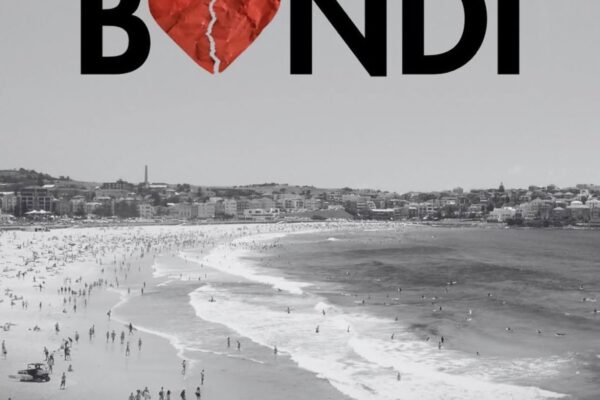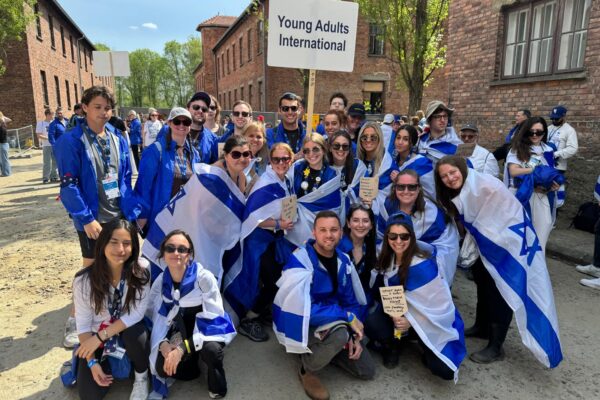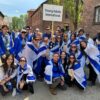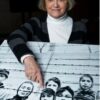“Those of you who may survive, bear witness. Let the world know what has happened here.”
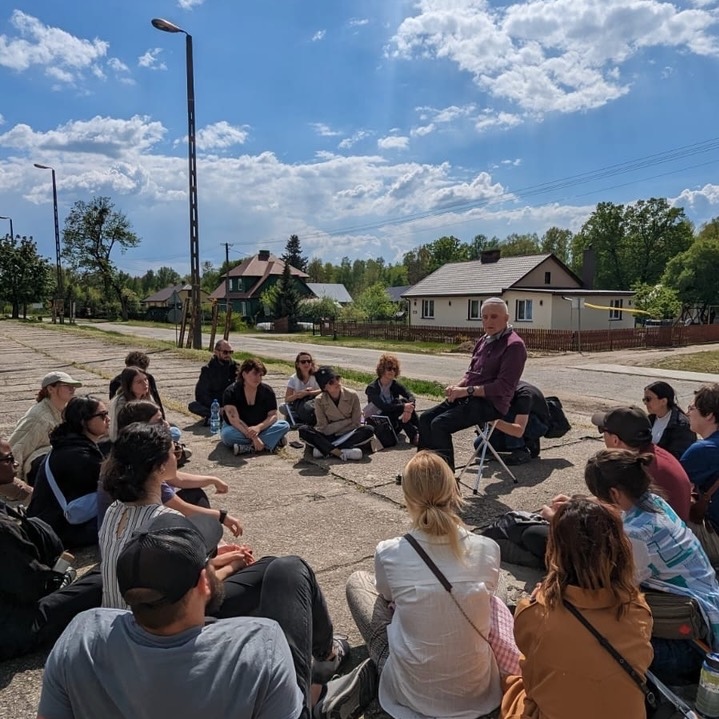
Gershon Willinger telling his story to students at the end of the train tracks, just outside the gates of Sobibor, May 13, 2023, (PC Carla Wittes)
Oct 14th marks the date of one of the most significant moments during the Holocaust that took place in the Sobibor death camp.
In the fall of 1941, Nazi Germany implemented a plan to systematically murder Jews living in the General Government area of Poland. Codenamed “Operation Reinhard” (named after assassinated SS General Reinhard Heydrich), the plan entailed the building of three centres of mass murder – Belzec, Sobibor, and Treblinka – by Nazi Germany in occupied Poland. Between 1942 and 1943, approximately 1.7 million Jews were murdered during Operation Reinhard, along with an unknown number of Poles, Roma, and Soviet POW’s.
In the gas chambers of Sobibor alone, located some 50 miles east of Lublin, some 200,000 Jewish prisoners were murdered from the summer of 1942 until November 1943.
On October 14, 1943, Jewish prisoners in Sobibor revolted, killing 11 members of the SS, among them the camp’s deputy commandant. Of the 300 prisoners who escaped, only about 50 of them survived the war. Following the revolt, Jewish prisoners from the Treblinka death were transported to Sobibor to destroy the camp – they were all subsequently murdered in November 1943.
While most of those who took part in the revolt did not survive, their efforts led to the early dismantlement of the camp shortly after the revolt, and an end to the further murder of Jews in its gas chambers.
Toivi Blatt was a 16-year-old Jewish orphan when he took part in the revolt in Sobibor. “We had no dreams of liberation,” he wrote. “We hoped merely to destroy the camp and to die from bullets rather than from gas. We would not make it easy for the Germans. “I never escaped from Sobibor. I’m still there — in my dreams, in everything,” he said in 2010.
Blatt recalled seeing Alexander Pechersky, one of the revolt’s leaders, speaking to his fellow prisoners before the revolt: “Those of you who may survive, bear witness,” Pechersky said “Let the world know what has happened here.”
Although Toivi Blatt was among the 300 who escaped, and the 50 who ended up surviving, his parents and brother were not so fortunate. They were murdered in one of the camp’s five gas chambers. Blatt dedicated much of the latter part of his life to Holocaust education, sharing his story with audiences around the world and writing two books about his experience.
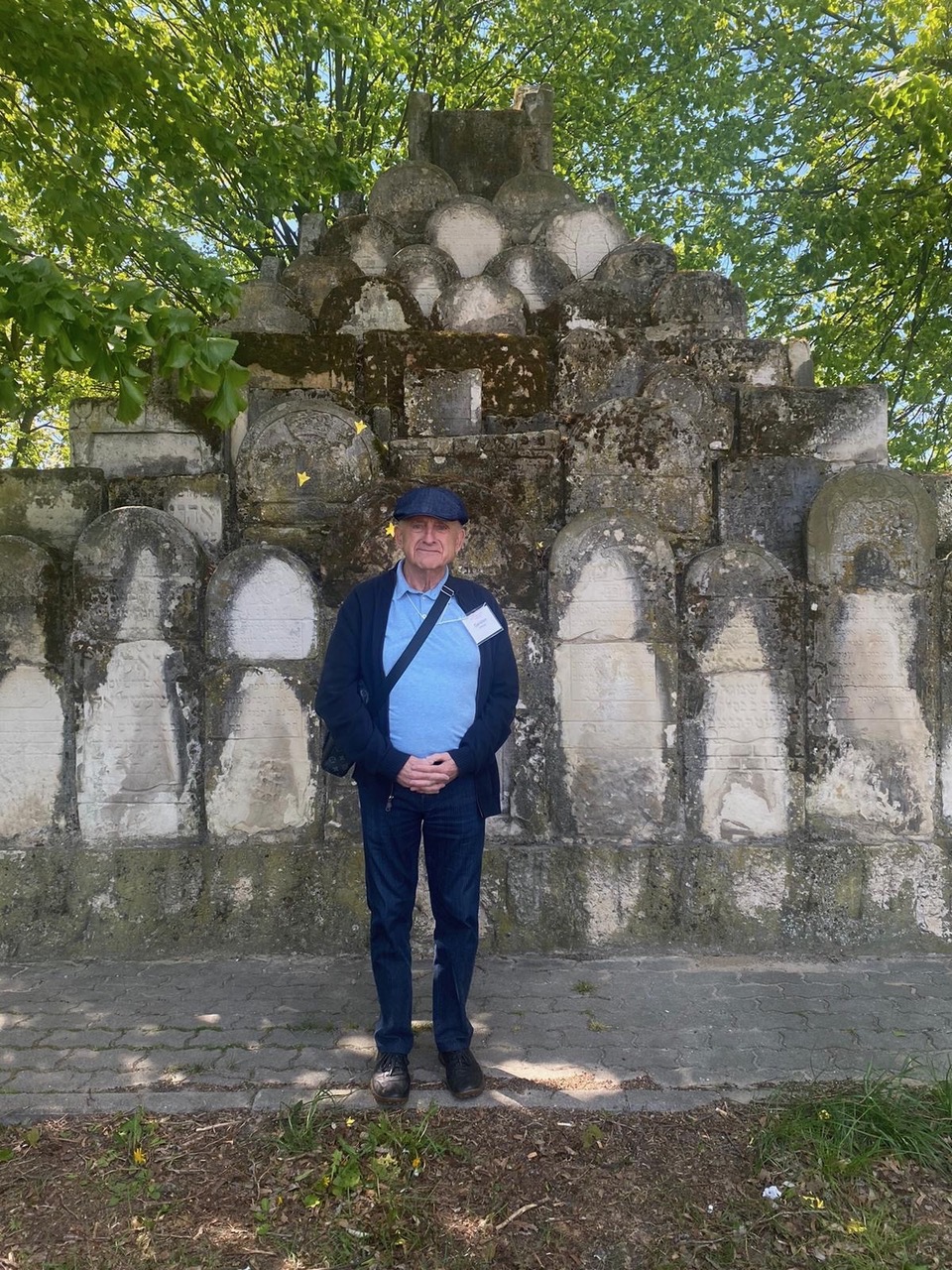
Gershon Willinger at the Stone Monument – Old Jewish Cemetery, Makow Mazowiecki, Poland, May 12, 2023. (PC Carla Wittes)
Like Blatt, Holocaust survivor Gershon Willinger, whose parents and grandmother were murdered in the Sobibor death camp, also dedicated the latter part of his life to Holocaust education. In 2023, Gershon Willinger travelled to Germany and Poland on the March of Remembrance and Hope with a group of 20 Canadian university students from diverse and multi faith backgrounds. Along with their visits to once thriving sites of Jewish life and culture, the students visited sites of Jewish persecution and martyrdom including Auschwitz- Birkenau and Sobibor, where Gershon’s parents and grandmother were murdered.
Regarding the historic uprising at Sobibor, Willinger said: “It is so important for us to remember the Sobibor revolt, to remember that Jews did resist. Jews weren’t just led the sheep to the slaughter. We did resist and we wanted to live!”
Visiting Poland with the young Canadian students, and especially Sobibor, was deeply moving, for Willinger: “Going back with the students to Sobibor and sharing the story of my parents – Edith and Guido Willinger – with them, they become a name, not a number.”
Acknowledging the importance of telling his story to students on the ground Willinger said: “It was very important for the students on the trip, to be with a survivor, for them have constant dialogue with a survivor, and for me to be able to be part of their future education. The students gave me hope. They looked at the Holocaust in depth, and they had difficulty walking through the camps, and they need to feel that. They need to know that the Holocaust was the attempted eradication of an entire people which was planned and planned and planned. And I think at the end of the trip they did understand that. I believe that going with me on the trip changed their lives completely”.
Said one student: “To me this journey took on a whole another level when I got to meet someone who was so directly impacted by the Holocaust. I think Gershon is a wonderful witness and example of fortitude and forgiveness. His words, actions and presence moved me deeply”. Another student noted: “I consider it a great privilege to have shared this experience with Gershon, and his participation was impactful beyond words. In Gershon, I saw unrivalled resilience. His humanity illuminates the darkness and spreads the light of truth and hope”.
The uprising at Sobibor revolt was one of three revolts led by Jewish prisoners in Nazi German death camps in occupied Poland. Revolts also took place in Treblinka extermination (in August 1943) and Auschwitz-Birkenau (in October 1944.)
But Sobibor was the only successful instance of a mass uprising and escape from a death camp during the Holocaust.[1]
[1] https://www.latimes.com/archives/la-xpm-2002-sep-21-et-tugend21-story.html
